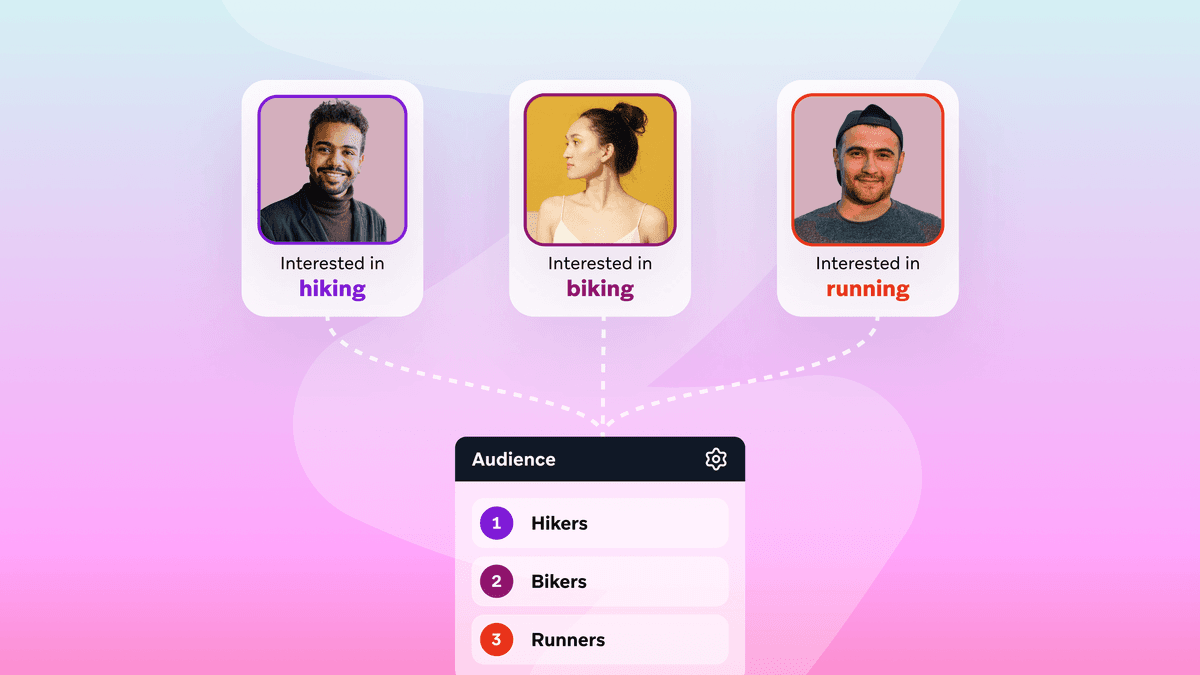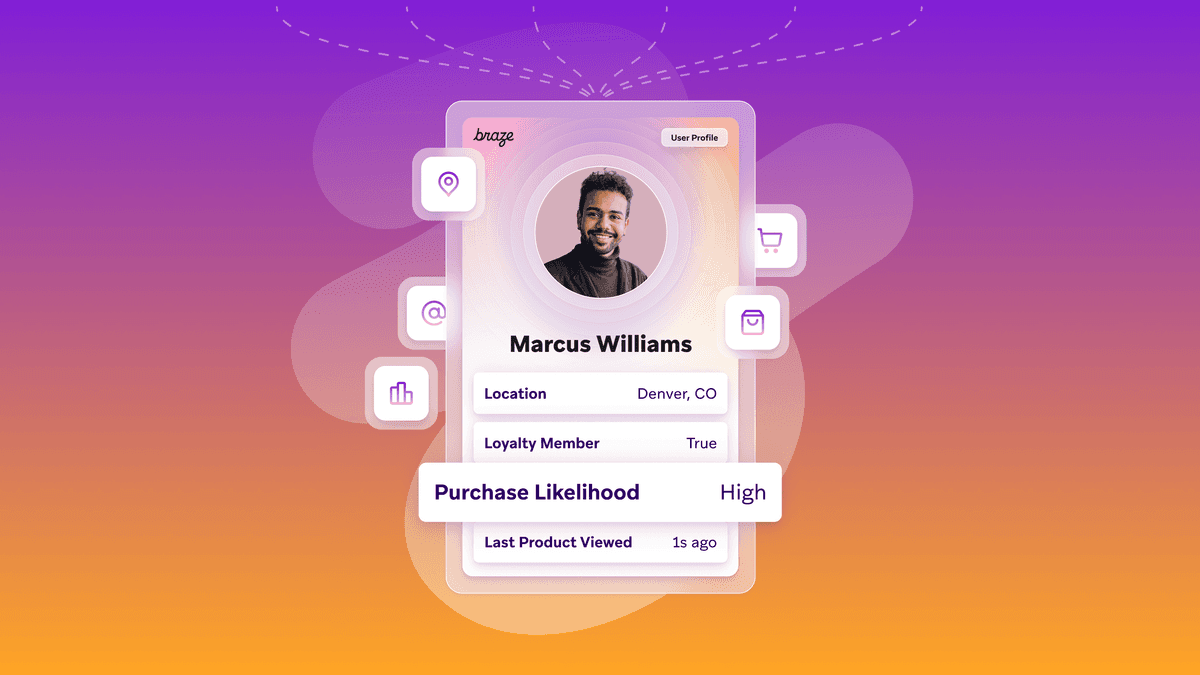What a Multichannel Promotional Campaign Really Looks Like
Published on January 05, 2016/Last edited on January 05, 2016/7 min read


Todd Grennan
Managing Editor, Content Marketing at BrazeThe rise of mobile marketing and its array of powerful outreach channels has led to a lot of talk about multichannel messaging and how it can be an asset to brands. That these kind of campaigns are effective is undeniable—using multiple channels in your onboarding campaigns has been shown to lead to retention rates nearly twice as high as campaigns sent through a single channel.
But while a multichannel strategy is a great way to boost audience retention and reach customers you’d otherwise miss, getting started can be intimidating for marketers. After all, some people have never received a multichannel campaign, let alone sent one. It’s natural to wonder how all those different messages can fit together, and what the customer experience is like.
To give you a better understanding of what a full multichannel messaging campaign looks like and how it functions, we’ve put together a sample campaign. This campaign will use three different messaging channels to promote a sale for an ecommerce app aimed at women called PamperHer. Let’s get started!
What are the messaging channels?

For the purposes of this example, we’re going to focus on the three most commonly used mobile messaging channels:
- Push notifications: These messages are great for short, urgent outreach. They pop up directly on your mobile device’s screen, grabbing your attention even if you’re in the middle of doing something else. That also means, however, that overusing push notifications can really irritate your customers… and lead them to opt out of future notifications. So it’s best to make use of push notifications sparingly.
- Email: As you probably already know, email is an ideal channel for sending rich content and in-depth messages to your customers. Not every customer will choose to share their email address with your brand, but it’s a good way to reach the ones who do.
- In-app messages: This outreach type is probably the most versatile and flexible. While in-app messages can resemble push notifications in their simplicity and directness, rich in-app messages can support large images and rich content, making them closer to emails in look and feel. These messages are only visible to customers using your app, though, so they’re most effective in communicating with people already engaged with your brand.
There’s a fourth mobile messaging channel—News Feed Cards—but it’s the newest of the channels and many marketers are still getting comfortable using it. Check out our blog post on News Feed Cards for a detailed look at what they are and how you can use them.
The promotional campaign
Imagine that PamperHer will be running a four-day sale and is looking to use multichannel messaging to inform its audience about the sale and encourage them to make a purchase. To reach your target audience as effectively as possible, it’s important to plan out a messaging cadence for your promotional campaign that takes advantage of the strengths of each outreach channel:

Message #1: Rich in-app message

By opening the campaign with a rich in-app message, you can reach all the people who are currently active on your app at the start of the sale, as well as anyone who opens the app before the sale finishes. These customers are the digital equivalent of people browsing in a brick and mortar store—they’re not guaranteed to buy anything, but the simple fact that they’ve chosen to open your app makes it more likely that they’ll be open to your outreach. Plus, since rich in-app messages support images and larger amounts of text than simple in-app messages, it’s a good channel to use to lay out the benefits of the sale and highlight it with a compelling picture.
Message #2: Email

The next step is to send a personalized email promoting the sale. Customers who visited the app and saw the in-app message, but haven’t yet purchased anything will receive an email that draws on information contained in their user profile to highlight sale items from their favorite category. On the other hand, customers who haven’t seen the rich in-app message will get a simpler message announcing the sale, laying out what’s included and promoting the 10% discount. By personalizing the campaign and targeting different versions of the message to different segments of customers, you can nudge engaged customers closer to a conversion while greeting less-engaged customers with a clear explanation of the sale and its benefits. Plus, using this kind of personalization and segmentation in your marketing emails boosts open rates by as much as 760%.
Message #3: Simple in-app message

This simple in-app message will only appear to customers who previously viewed the rich in-app message and/or the email but haven’t made a purchase. Because they’ve already been informed about the specifics of the sale and the discount being offered, this message can serve as effective reminder about the promotion (and an opportunity to sweeten the pot by throwing in free shipping).
Message #4: Push notification

As the sale approaches its end, PamperHer can use the most direct and urgent messaging channel to drive one last wave of customers to the app’s sale page. If the person receiving the push notification has received previous messages about the promotion, then the push they get will increase the discount to 15% and urge them to make a purchase by noting that the sale they’ve been hearing so much about is nearly over. If, on the other hand, the recipient hasn’t received or looked at any other messages in the campaign, the push they get will announce the promotion like it’s a one-day flash sale and offer them the 15% discount and free shipping as long as they act soon.
The takeaway
By executing on a multichannel strategy, PamperHer increases the chances that they reach the people they’re targeting for the sale. But beyond that, multichannel messaging also helps PamperHer make its promotional outreach responsive to customer behavior—people who convert drop out of the campaign, and people who don’t are targeted for additional, personalized messages sent in messaging channels that they might be more likely to engage with.
The customer experience
Engaged customers
People who regularly use the PamperHer app will have the fullest experience of the multichannel promotional campaign associated with the sale. They’ll receive the rich in-app message when they open the app, then get the follow-up email, the simple in-app message reminder, and the push notification, the chain of outreach continuing until they either make a purchase or the sale concludes.
While they’ll receive a number of messages over the course the campaign, they’ll only get one email and one push, reducing the chances that they’ll feel like they’re being hit with a barrage of outreach. And because they’re already regular customers, they’ll be more likely to appreciate the information about the sale and its related discounts.
Occasional customers
Because these customers are less consistent in their use of the PamperHer app, they’re less likely to find out about the sale through an in-app message, making the use of email or push notifications essential if you want to reach them. But because overuse of these channels can irritate people when used heavily (and because some of these customers may already be lapsing or inactive), it makes sense to tread carefully—sending them too many messages could potentially push them to uninstall your app or opt out of push, making it hard to reach them in the future.
What now?
Multichannel messaging is a great way to engage your audience with a big sale, but long-term success in mobile depends on more than just big results from a single promotional campaign. To build strong relationships with your customers, it’s important to find ways to encourage customers to engage with your brand on a consistent basis—after all, 90% of customers who engage with an app for three consecutive weeks after download are retained for the next three months. For more information on how to get there, check out our blog post on how to motivate customers to engage regularly.

Related Tags
Be Absolutely Engaging.™
Sign up for regular updates from Braze.




